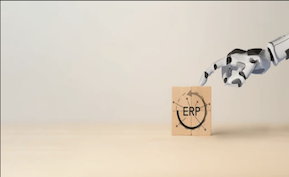ERP Manufacturing Guide 2025: Why Most ERP Projects Fail
The ERP Manufacturing Guide 2025 examines why so many manufacturing ERP implementations fall short of expectations and what organizations can do to ensure success. Despite record levels of investment in digital transformation, most manufacturers still face challenges in aligning technology with business goals. This report identifies the root causes of ERP failure and outlines a path toward measurable results.
The Reality of ERP Implementation in Manufacturing
Manufacturers continue to view ERP as a critical tool for competitiveness and efficiency, yet many projects struggle to deliver on their promise. Misaligned objectives, poor planning, and outdated systems create barriers that lead to cost overruns, delays, and operational disruption. The report emphasizes that ERP success is less about software selection and more about execution strategy and leadership engagement.
Common Causes of ERP Failure
Failure in ERP implementation often begins with a lack of clarity. When organizations underestimate process complexity or fail to plan for change management, the system becomes a source of frustration instead of improvement. Limited executive involvement, inconsistent data migration, and unrealistic timelines further increase the risk of underperformance. The report highlights that these challenges can be mitigated with a structured, phased approach and strong cross-functional collaboration.
Turning ERP into a Strategic Asset
When properly implemented, ERP systems become a foundation for long-term operational excellence. They unify production, finance, supply chain, and customer data into one reliable source of truth. Manufacturers that adopt modern ERP platforms gain the ability to make real-time decisions, streamline workflows, and identify inefficiencies before they impact performance. The result is greater control, transparency, and agility across the business.
Leadership and Change Management
ERP transformation depends heavily on leadership commitment and employee adoption. Successful implementations prioritize communication, user training, and process standardization before go-live. Leaders who guide these transitions with clear vision and accountability create a culture that embraces continuous improvement and digital progress rather than resisting it.
Achieving Sustainable ERP Success
The ERP Manufacturing Guide 2025 concludes that the future of ERP in manufacturing lies in flexibility, scalability, and intelligence. Cloud-based systems, automation, and analytics are allowing manufacturers to evolve their operations dynamically. Companies that treat ERP as a long-term strategic platform, rather than a one-time IT project, will gain lasting efficiency and a true competitive edge.







